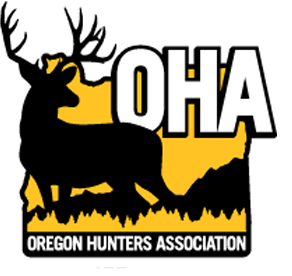 In late 2021, 4,600 acres of public hunting area were added to the existing Minam River Wildlife Area as the result of the purchase of the property from Hancock Natural Resource Group in a project led by RMEF and ODFW and supported by OHA. It has taken years to come to fruition.
In late 2021, 4,600 acres of public hunting area were added to the existing Minam River Wildlife Area as the result of the purchase of the property from Hancock Natural Resource Group in a project led by RMEF and ODFW and supported by OHA. It has taken years to come to fruition.
The good news is the major addition to the existing Minam River Wildlife Area. The better news is the future addition of nearly 11,000 more acres in a second phase of the major land acquisition. This will effectively bridge an area along the upper Minam River that will create public lands from the Eagle Cap Wilderness on the south to the confluence of the Minam and Wallowa Rivers to the north.
This area is well known for its existing wildlife values, and it has a unique human history, too – both indigenous use and more recent settlement. It provides winter range for Rocky Mountain elk, habitat for mule deer, white-tailed deer, turkey, grouse and Rocky Mountain bighorn sheep. The upper Minam River itself is home to steelhead, Chinook salmon and bull trout.
The uplands portion of this property was known as “Minam on Top” by white settlers. It was first homesteaded just over 100 years ago, and many acres were converted to dryland farming and pasture improvement. The 1930s were tough on these homesteaders, mostly due to prolonged drought, and most homesteads were abandoned or sold by WW II. More recent years saw the primary land use as cattle grazing and then timber harvest. After WW II, several stock ponds were developed to augment livestock needs. These ponds continue for this use, and they provide some excellent water sources for wildlife. Now all they need is some access restrictions for overuse from livestock and elk.
OHA chapters around the state stepped up to provide a $100,000 contribution toward the first purchase. We have also been active in providing support for grant funding for the second phase purchase. But our involvement will go far beyond the financial contributions. Upon purchase of the property, ownership will be directly transferred to ODFW to be added to the existing wildlife area. OHA plans to have a strong presence in the development of a management plan for the property. It is already stated that this will continue to be a “working landscape,” providing managed grazing to condition forage for elk winter range, timber management to keep forests healthy and resilient, and riparian management for a range of benefits.
Jim Akenson, Northeast Director for the OHA State Board, is very familiar with this tract of land. The existing values are notable, but Jim has already started looking at potential projects to make the area even better for wildlife and the public.
“As I see it, the key with this landscape is having quality water sources available for a variety of wildlife, and livestock too,” he said. “The area has a history of being a working landscape, and continuation of this land-use approach, combined with measures to maintain a low level of disturbance – such as from vehicle and ATV activities – will greatly enhance opportunities for huntable species like elk, deer, bear, turkey and grouse. The potential for sportsmen-led conservation is huge.”
Vic Coggins, former OHA Northeast Director, and perhaps one of the most knowledgeable wildlife biologists for the area, added: “There is a great opportunity to improve ranges in the lower Minam,” noting that the purchase of this land by a public agency would ensure winter range for more than half of the Minam elk herd. “Managing this winter range would be the single most critical management activity to benefit this important elk herd.”
Let’s celebrate the addition of increased public hunting opportunity, and roll up our sleeves on making this valuable piece of property even better for the wildlife we care about.
Many OHA chapters contributed to the property acquisition effort, including:
Union/Wallowa $20,000
Josephine County $10,000
Redmond $10,000
Emerald Valley $10,000
Bend $10,000
Pioneer $10,000
Yamhill County $10,000
Mid-Willamette $10,000
Capitol $5,000
Umpqua $5,000
Rogue Valley $5,000
Columbia County $5,000
Lake County $2,500
Blue Mountain $1,200
Mid-Columbia $1,000
